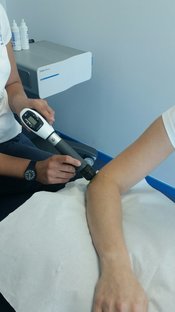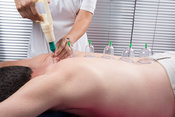The Importance of Movement
The Importance of Movement:
In today’s fast-paced, office-based world, many of us are glued to our desks for hours on end. While this may be great for productivity, it’s not so great for our bodies. Prolonged sitting can lead to stiffness, pain, and long-term health issues. The good news? Incorporating movement into your daily routine can make a world of difference.
Why is Movement Important?
Our bodies are built for movement. Staying active helps keep our joints flexible, strengthens our muscles, and improves blood circulation. Beyond physical benefits, regular movement plays a key role in preventing chronic conditions like cardiovascular disease and can significantly enhance mental well-being by reducing symptoms of depression and anxiety.
Movement is also a powerful tool for managing pain. Despite common misconceptions, moving your body doesn’t cuse harm—it actually helps alleviate stiffness and discomfort. Gentle movements promote blood flow, reduce muscle tension, and support the body’s natural healing process.
According to the World Health Organization (WHO), adults should aim for at least 150 minutes of moderate-intensity aerobic activity or 75 minutes of vigorous-intensity aerobic activity per week. This can include brisk walking, cycling, or even dancing. Strength-training exercises should also be done twice a week to maintain muscle health.
So, whether it’s a daily walk, stretching, or a structured exercise routine, keep moving—your body and mind will thank you!
Tips for Staying Active
Here are some practical tips to help you stay active, even with a busy schedule:
Take Regular Breaks Aim to stand up and move every 30 minutes. Set a timer or use a reminder app to prompt you. A quick stretch or a walk around the office can do wonders.
Stretch at Your Desk Simple stretches can keep your muscles loose and your joints mobile. Try:
Neck stretches: Gently tilt your head side to side.
Shoulder rolls: Roll your shoulders forward and backward.
Seated spinal twists: Sit upright, twist your upper body to one side, and hold for a few seconds.
Use Active Desk Accessories Consider a standing desk or a balance ball chair to encourage better posture and engage your core.
Walk and Talk Take phone calls or meetings while walking if possible. This adds steps to your day and breaks the monotony of sitting.
Stay Hydrated Drinking water not only keeps you hydrated but also encourages you to get up more frequently for refills and bathroom breaks.
Incorporate Lunchtime Exercise Use part of your lunch break for a short walk or a quick workout. Even 10-15 minutes can boost your energy levels for the afternoon.
Make it a non-negotiable!
Quick Office Workout
Here’s a mini workout you can do in just 5 minutes:
Chair Squats: Stand in front of your chair, lower yourself down as if sitting, then stand back up (10 reps).
Calf Raises: Stand and lift your heels off the ground, then lower them slowly (15 reps).
Hip flexor stretch standing
Make Movement a Habit
Building movement into your day doesn’t have to be complicated. Start small, stay consistent, and listen to your body. Over time, these small changes can lead to big improvements in your health and productivity. Your older self will thank you!
At KUUR Rehabilitation and Physiotherapy, we’re here to help you stay active and pain-free.
References:
World Health Organization. Physical Activity Guidelines: https://www.who.int/news-room/fact-sheets/detail/physical-activity
Harvard Health Publishing. Benefits of Exercise: https://www.health.harvard.edu/exercise-and-fitness/the-importance-of-exercise

Patient update
Read moreWe recognize that the COVID-19 virus requires all of us to be more mindful and vigilant as we go through our regular activities.
Our clinic strictly…

Vertigo treatment
Read moreVertigo is the sensation that you or everything around you is spinning- enough to affect your balance. It’s more than just faintness, it is a…

6 simple and effective ways to avoid exercise-induced injuries
Read moreAs the off season comes to a close and people come back from holiday here's how best to reduce the risk of injury upon resuming exercise after a…

Biodynamic Craniosacral Therapy
Read moreBiodynamic Craniosacral Therapy is a subtle manual approach that traces its origins to osteopathy.


